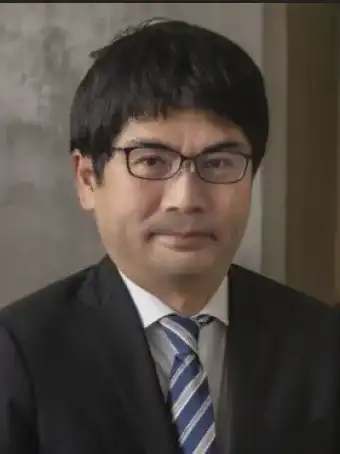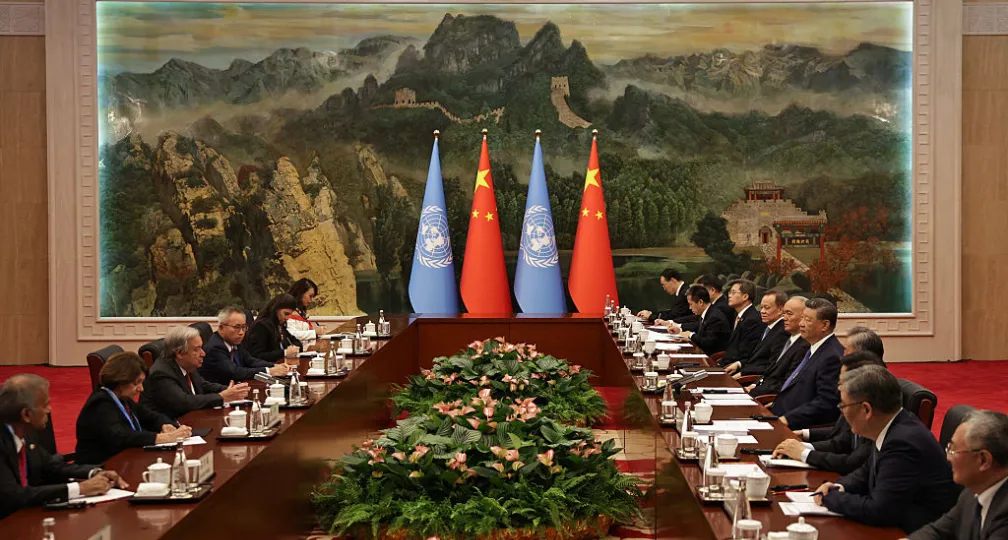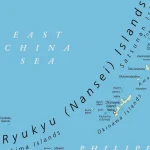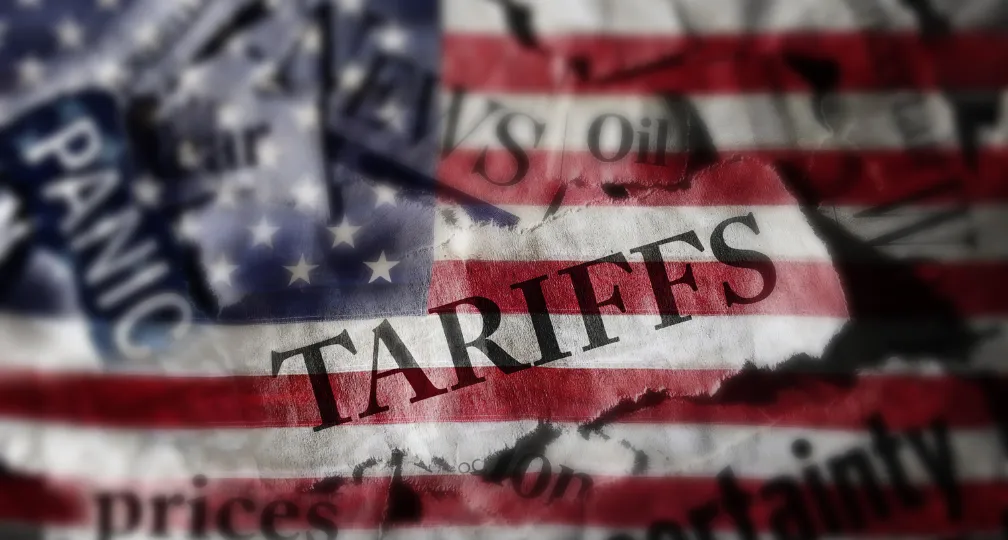How can the EU strengthen its strategic autonomy regarding chips?

Strategic autonomy was originally addressed by France in the late 1940s with the intent of gaining more autonomy in its relations with the United States, though in recent years France has used the term on the EU stage as well and it has been discussed often.
While the definition is not clearly set, the EU’s strategic autonomy could be described as the bloc gaining autonomy in the policymaking process to make its own decisions without being influenced by other countries.
Open strategic autonomy, a term deriving from strategic autonomy, is used in the context of the EU’s economic security.
The idea is that while the bloc maintains the stance of advocating for free and fair trade multilaterally, it will take necessary actions on its own when there is a risk of losing autonomy, as it has become difficult to depend on the World Trade Organization’s Appellate Body, which has not been functioning.
Based on these premises, this article will provide an overview of the European Chips Act, which is key to achieving the three Ps — promotion, protection and partnering — in the EU’s Economic Security Strategy, as well as the Anti-Coercion Instrument (ACI), an instrument to help meet the “protection” requirement. It will discuss whether these policies could help strengthen the EU’s strategic autonomy, and how the EU can cooperate with Japan in view of the “partnering” element.
The European Chips Act
In September 2021, European Commission President Ursula von der Leyen said in her State of the Union address that the European economy had been greatly impacted by the global shortage of semiconductors in 2020, and addressed the issue of the region being heavily dependent on the chip supply chain in East Asia. In this context, she presented the idea of proposing a new European Chips Act, stressing the importance of protecting European technological sovereignty.
The reason behind von der Leyen’s speech was that while the supply of next-generation semiconductors is critical to help achieve green and digital transformation — two of the most important pillars of the EU’s growth strategy — the EU’s share in the global semiconductor manufacturing market had dropped to around 10%, and production in the region was limited to general-purpose chips.
The proposal to create the European Chips Act reflected the EU’s strong sense of crisis over the fact that its growth strategy was largely dependent on third countries and its autonomy was being lost.
In February 2022, the European Commission proposed the European Chips Act, including mobilizing more than €43 billion of public and private investments — €3.3 billion coming from the EU budget and the rest from its member states’ budgets and the private sector — to reach its ambition of doubling its then market share to more than 20% in 2030.
The draft was made up of three pillars. The first was the creation of the Chips for Europe Initiative — measures taken through a public-private consortium to make use of the region’s strength in research and development and to connect it to the production of advanced chips.
The second pillar was to partly relax rules that ban member states from offering public support to private-sector projects with “first-of-a-kind facilities” that could distort competition, enabling them to grant aid to facilities contributing to a stable supply of semiconductors.
The third pillar was to create an early warning mechanism to monitor the supply-demand gap for semiconductors and trigger the activation of a crisis stage when shortages are anticipated.
The European Council and the European Parliament reached a political agreement on the draft law in April, and the council gave its final approval on July 25. The act entered into force on Sept. 21.
The European Chips Act resembles the U.S.’ CHIPS and Science Act of 2022 from the perspective of industrial policy, such as by subsidizing the establishment of semiconductor factories, but the two differ in terms of achieving economic security.
While the EU act is focused on the region itself, based on the idea of de-risking to achieve strategic autonomy, the U.S. act also takes into account its competitors as part of a decoupling approach.
Specifically, the “guardrails” provision included in the U.S. act requires chip firms receiving CHIPS Act funding not to engage in “any significant transaction involving the material expansion of semiconductor manufacturing capacity in China or any other foreign countries of concern for 10 years,” otherwise violations may trigger a full clawback of the funding.
This is where the difference between the policies of the U.S. and the EU is particularly evident.
Anti-Coercion Instrument
The next issue to focus on is the EU’s Anti-Coercion Instrument from the aspect of “protection” as per the EU’s Economic Security Strategy.
In September 2020, von der Leyen announced that she would propose a tool to protect the bloc from and deter coercive actions by third countries which could threaten the EU’s strategic autonomy.
In December 2021, the commission proposed a draft version of the ACI.
Under the ACI draft, economic coercion was defined as a situation in which a third country intends to pressure the EU or a member state into making a particular policy choice by applying, or threatening to apply, measures affecting trade or investment.
In the draft, a wide range of tools were proposed, including increased customs duties, import and export regulations, limitations on participation in public procurement and restrictions on foreign direct investment.
However, the draft proposal also stated that the objective of the ACI was to deter third countries from using coercion and to cease coercion when it is already being used against the EU or its member states. For this reason, in the above case, the draft describes the EU engaging with a third country to find a solution through deep negotiations and leaving the use of the ACI as a last resort.
The European Commission, the European Council and the European Parliament reached a final political agreement on the ACI in June and its entry into force is expected as early as the end of this year.
The commission said the reason behind the proposal on the ACI was that the World Trade Organization’s dispute settlement mechanism is not available to litigate a case of economic coercion.
The move indicates the EU’s determination to increase its strategic autonomy by sending a message to its member states that the EU will “protect” their interests by taking a unified approach on economic coercion.
Japan-EU cooperation
Could the EU increase its strategic autonomy through the European Chips Act and the ACI?
The bloc will be able to increase its strategic autonomy, though there will be limitations to the EU to achieving its goal by itself. Instead, it will be easier for the EU to achieve its goal by strengthening cooperation with like-minded countries.
First, as is widely known, the semiconductor supply chain comprises of various manufacturing processes across multiple countries. This means that even if the EU achieves its goal of gaining more than a 20% share of the world semiconductor manufacturing market, it will not be possible for the bloc to complete all manufacturing processes within the region.
It is therefore necessary for the EU to work with like-minded countries to secure fair competition throughout the production process and supply chains, from upstream to downstream.
In case economic coercion by a third country takes place, the EU can also impose more pressure on that country if the bloc cooperates with its like-minded nations rather than responding alone.
Should the EU cooperate with Japan?
The term strategic autonomy has been used in Japan’s discussions on economic security.
In December 2020, it was mentioned in the ruling Liberal Democratic Party’s recommendations on an economic security strategy, referring to the idea of avoiding excessive dependence on other countries by increasing the resilience of critical industries.
While the EU’s strategic autonomy is about the process of making policy decisions on its own, Japan’s approach is more pragmatic, focusing on making supply chains more resilient.
Although their focus differs, Japan and the EU could work together as they have a common goal of not relying too much on other countries’ supply chains.
Moves to cooperate are already being seen in policy agreements between Japan and the bloc.
As part of the third pillar of the European Chips Act, a decision was taken to create an early warning mechanism. In July 2023, Japan and EU agreed to establish a similar early warning mechanism that will allow them to share information promptly to avoid supply chain disruptions.
Just as the EU and the U.S. agreed in May 2023 to put in place a reciprocal mechanism to facilitate information sharing to prevent subsidy races, it will become necessary for Japan and the EU to build a similar framework in the future.
There should also be a discussion for Japan and the EU to consider a framework of supplying chips to each other in times of emergency.
Building supply chain resilience and addressing economic coercion were in a statement agreed upon at the Group of Seven summit meeting in Hiroshima in May, and member countries are expected to incorporate the statement into their policies.
As it is an important time for Japan and the EU to be working together, the EU strengthening cooperation with like-minded countries such as Japan will help increase not only the bloc’s own strategic autonomy but also Japan’s.


Visiting Senior Research Fellow
Satoshi Yamada has been a visiting senior research fellow at the Institute of Geoeconomics (IOG) since 2022. He has over 25 years’ experience in the Japanese private sector. From 2018 to 2022, Mr. Yamada was stationed in Washington, D.C., where he worked to establish a government relations and public policy team. During that time, he also worked with U.S. industry associations and think tanks engaging the U.S. government (both the Trump and Biden administrations) and the Congress. Prior to 2018, he worked on various social infrastructure projects in emerging economy countries, collaborating with multilateral development banks and development aid agencies. He holds an MBA from the Sloan School of Management at the Massachusetts Institute of Technology, and also studied at The Fletcher School of Law and Diplomacy at Tufts University.
View Profile-
 Is China Guardian of the ‘Postwar International Order’?2025.12.17
Is China Guardian of the ‘Postwar International Order’?2025.12.17 -
 Japan-India Defense in a Fragmenting Indo-Pacific2025.12.10
Japan-India Defense in a Fragmenting Indo-Pacific2025.12.10 -
 The “Economic Security is National Security” Strategy2025.12.09
The “Economic Security is National Security” Strategy2025.12.09 -
 India - Japan: The Glimpse of a Shared Vision2025.12.05
India - Japan: The Glimpse of a Shared Vision2025.12.05 -
 Beijing’s ‘Globalist’ Agenda Under Trump 2.02025.12.01
Beijing’s ‘Globalist’ Agenda Under Trump 2.02025.12.01
 Event Report: The Trump Tariffs and Their Impact on the Japanese Economy2025.11.25
Event Report: The Trump Tariffs and Their Impact on the Japanese Economy2025.11.25 The Real Significance of Trump’s Asia Trip2025.11.14
The Real Significance of Trump’s Asia Trip2025.11.14 The “Economic Security is National Security” Strategy2025.12.09
The “Economic Security is National Security” Strategy2025.12.09 The long road to a South Korea-U.S. trade deal2025.11.26
The long road to a South Korea-U.S. trade deal2025.11.26 The Tyranny of Geography: Okinawa in the era of great power competition2024.02.09
The Tyranny of Geography: Okinawa in the era of great power competition2024.02.09












